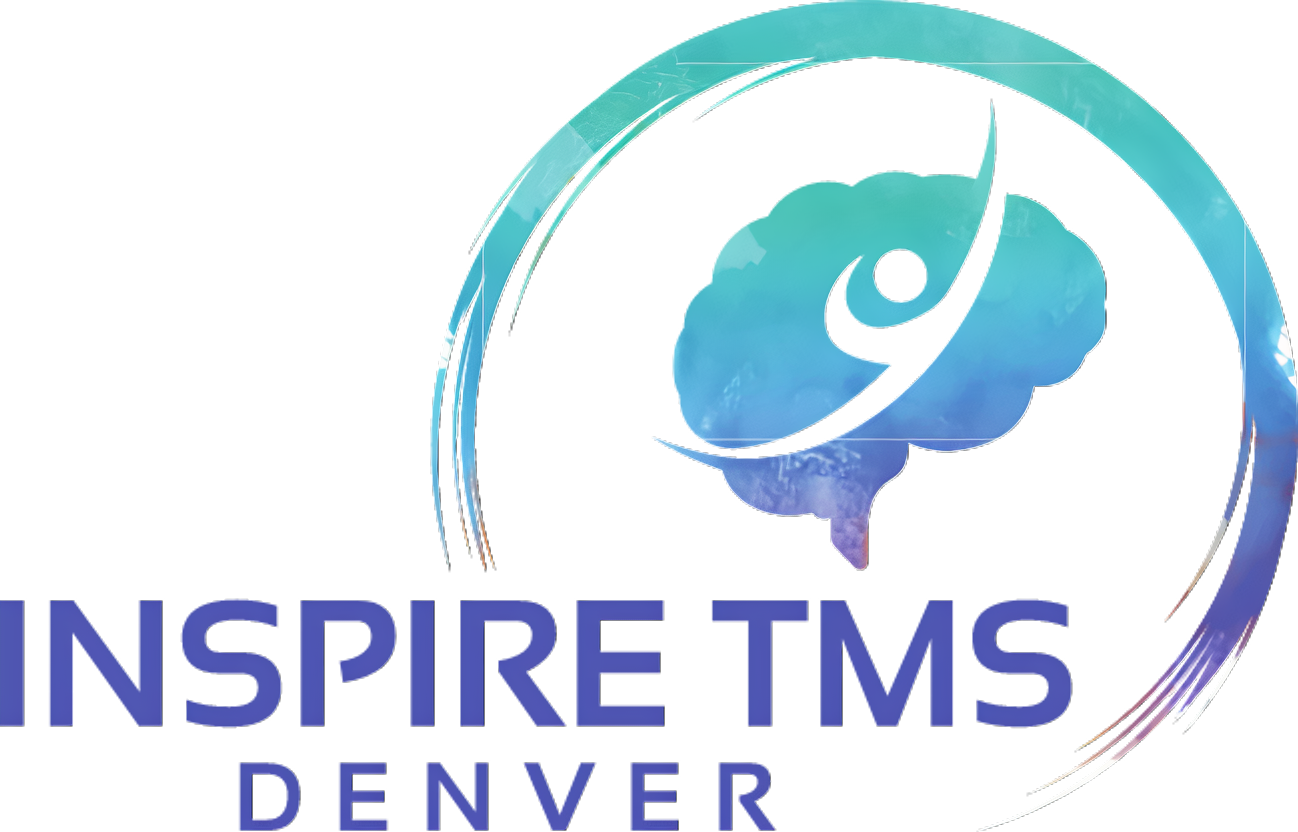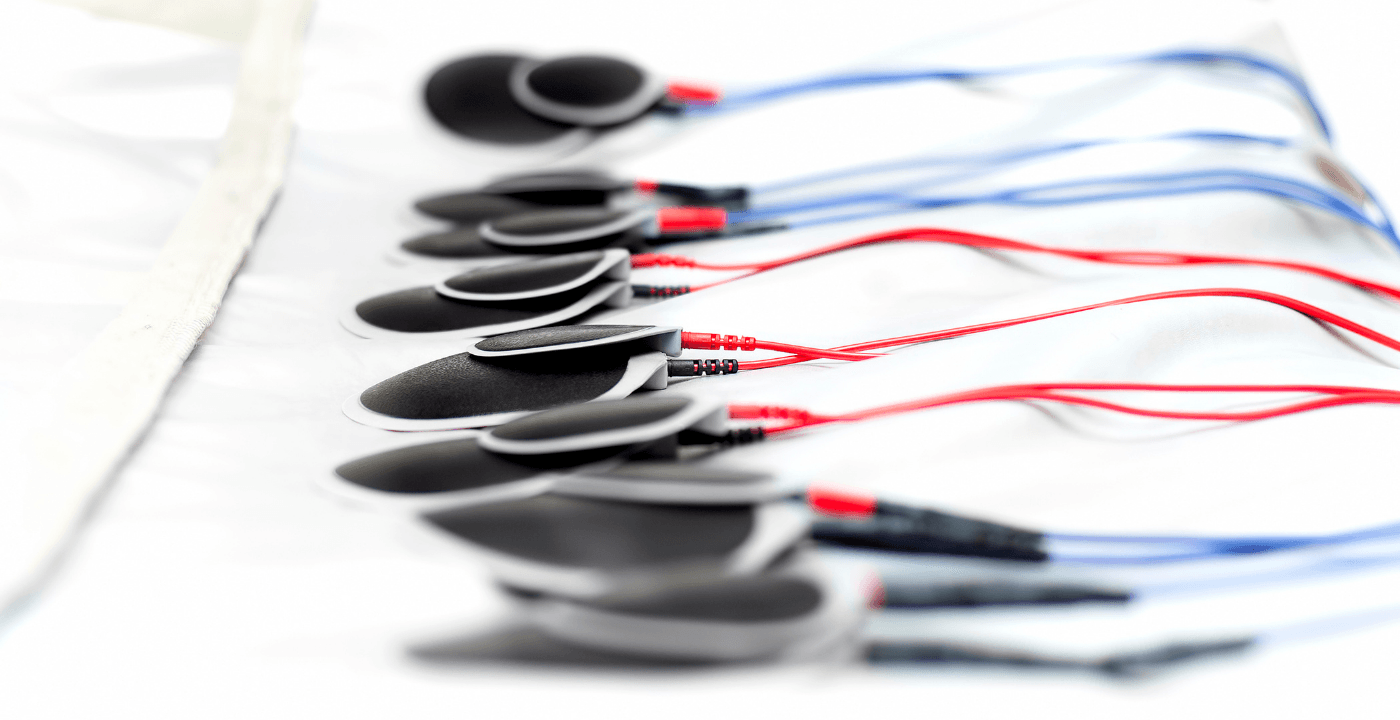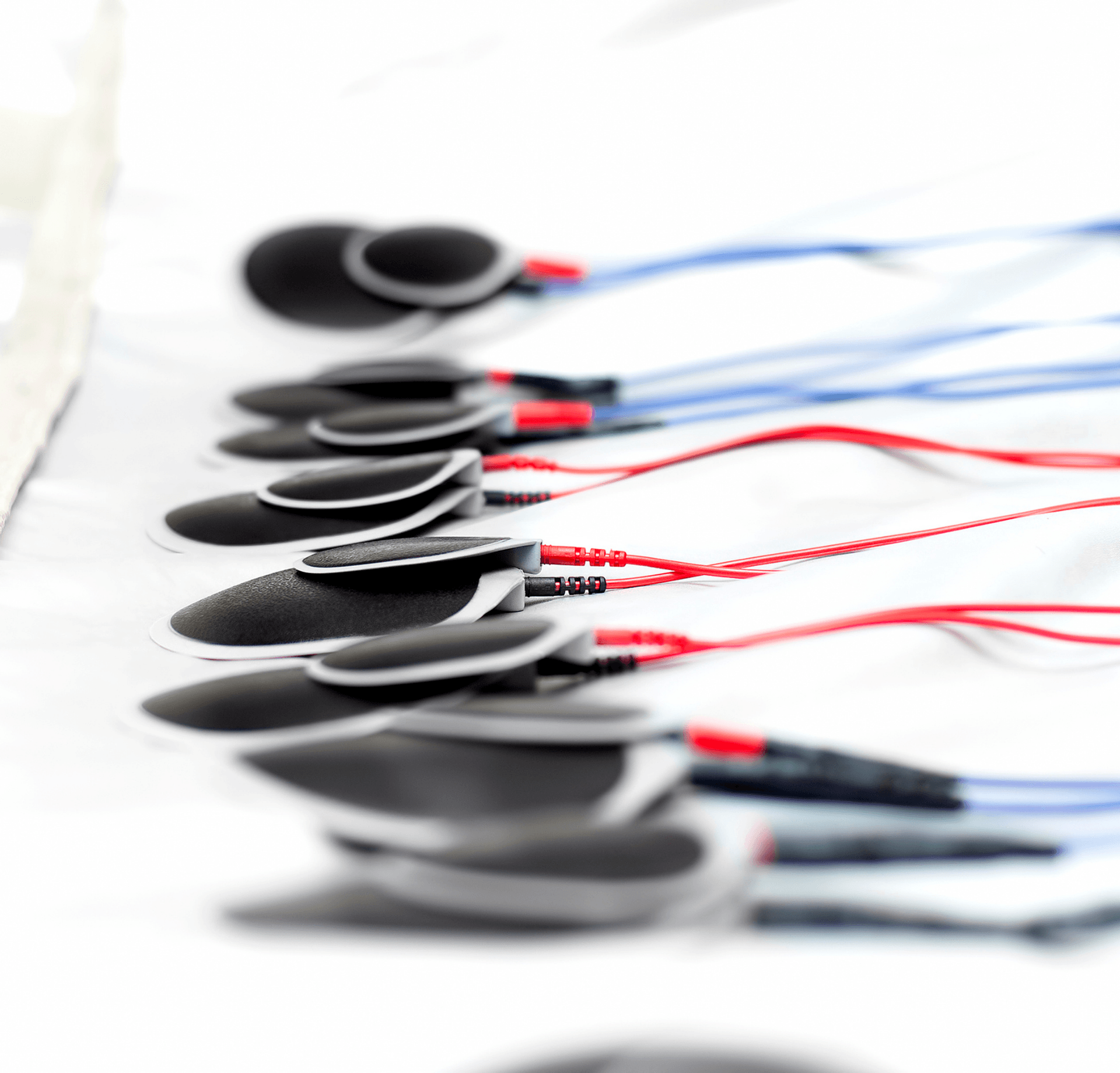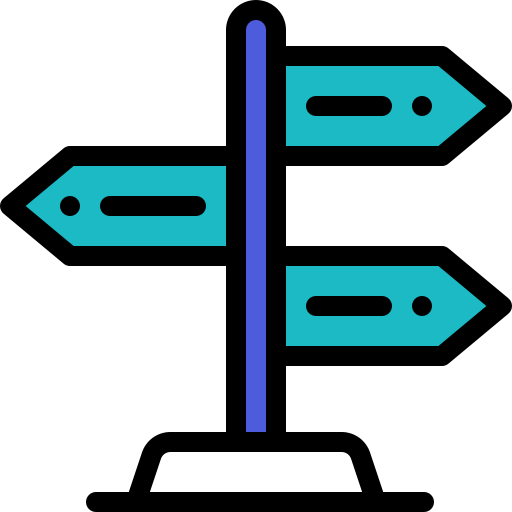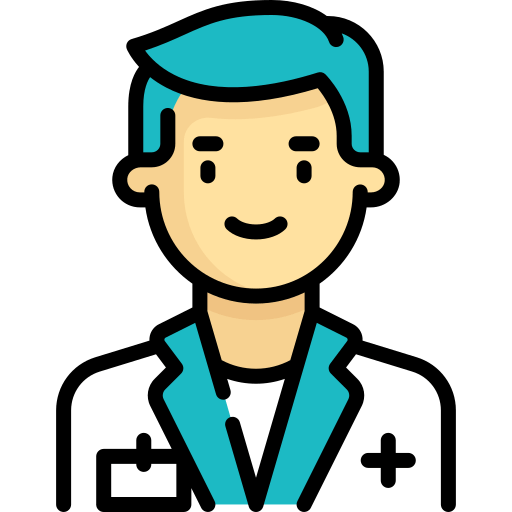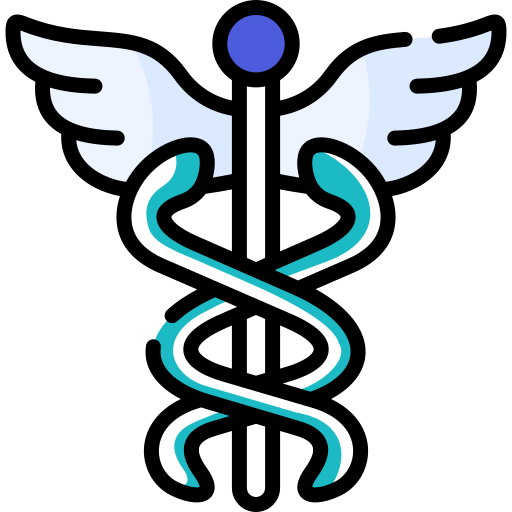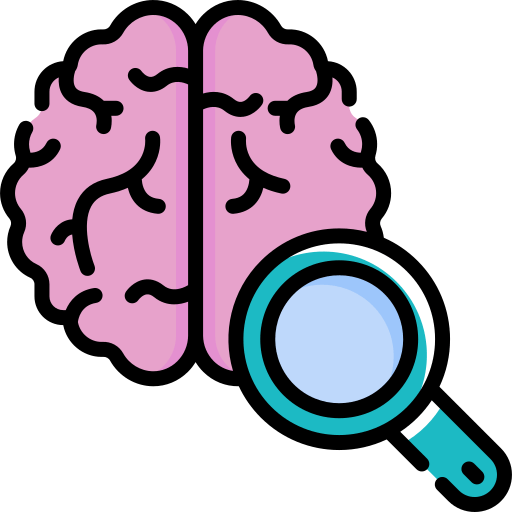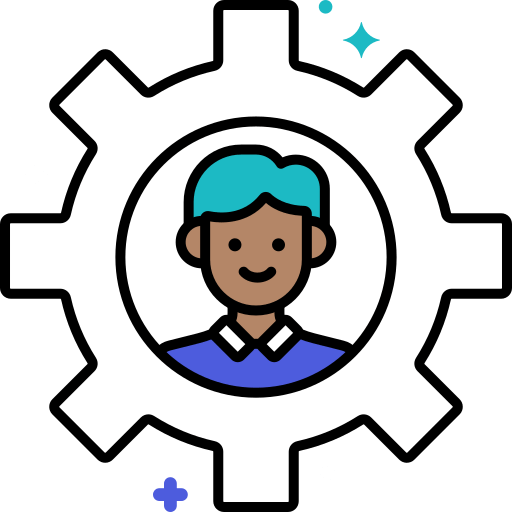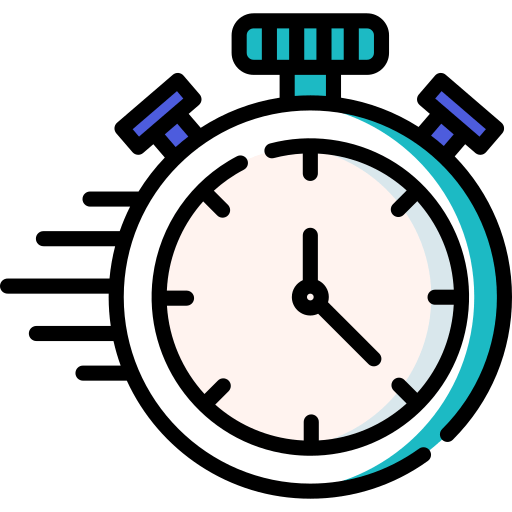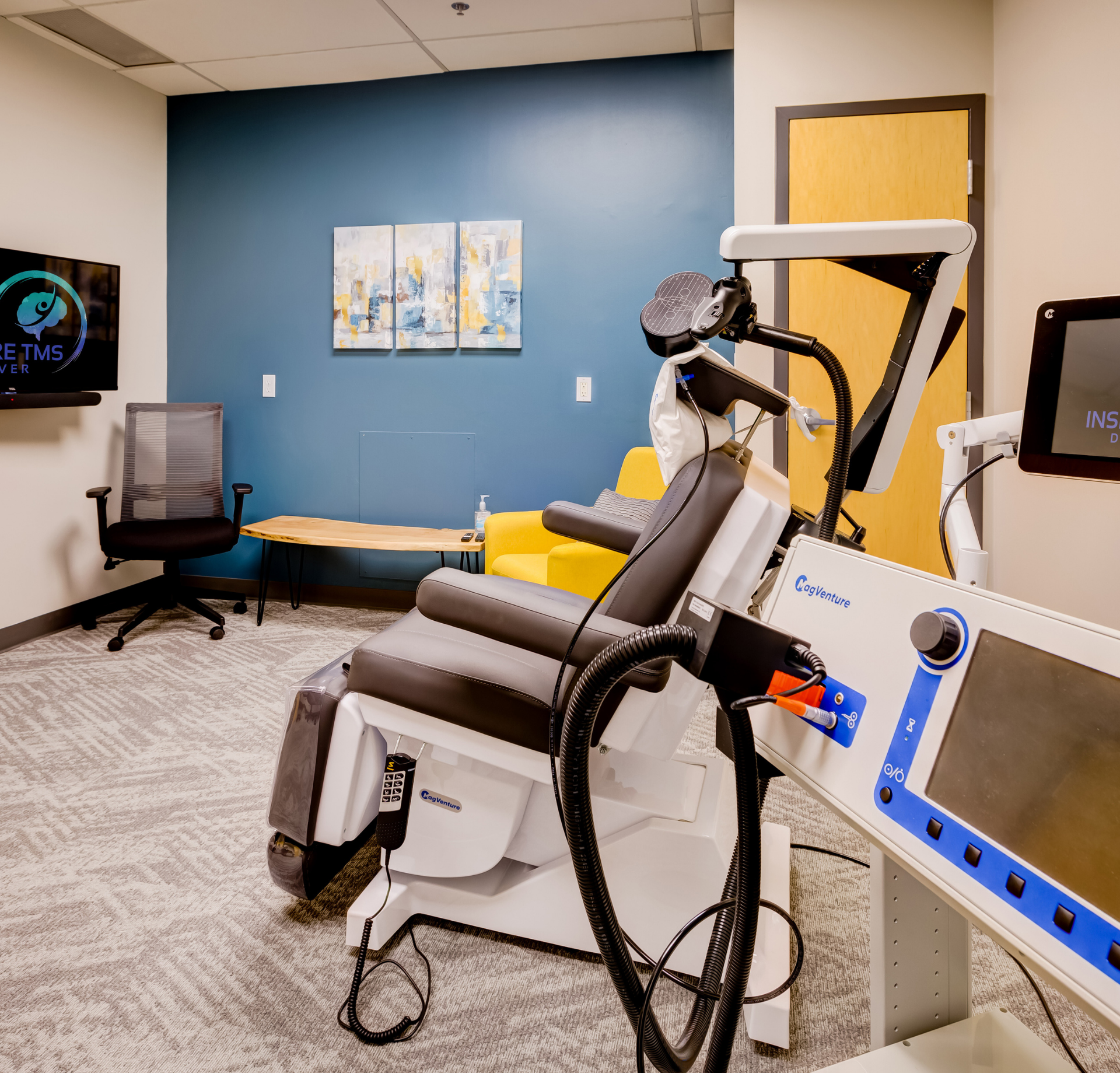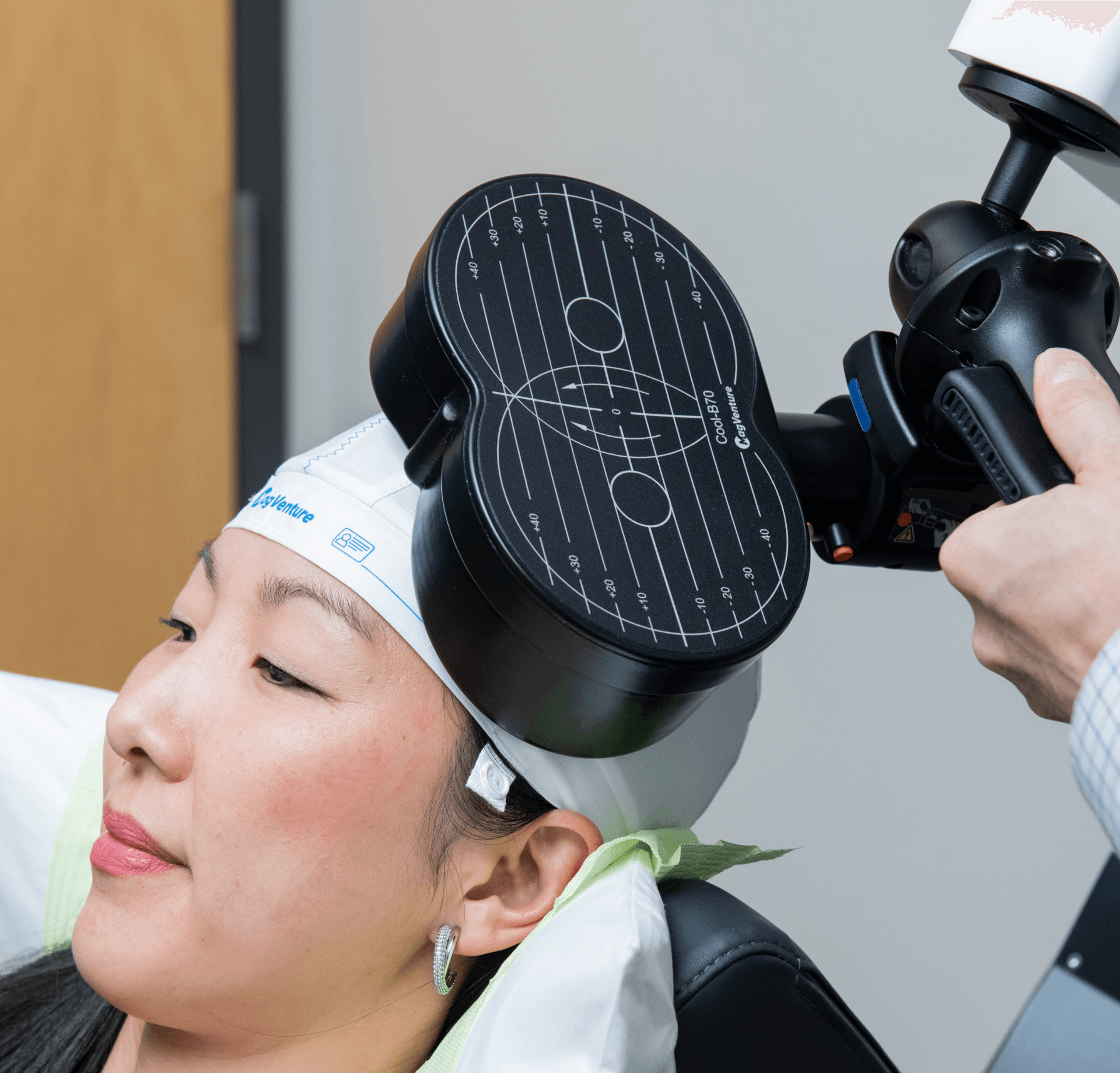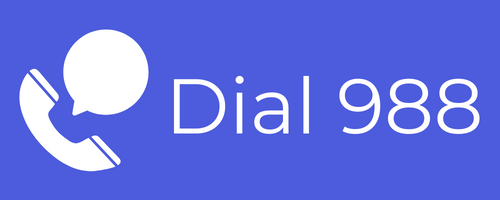TMS Vs ECT
Measuring TMS against ECT is like trying to compare apples to oranges, some similarities but major differences.
Want to know more about TMS? Check out this in-depth guide to TMS therapy with transparent and easy to understand explanations about TMS processes, protocols, and treated conditions.
TMS Vs ECT
Measuring TMS against ECT is like trying to compare apples to oranges, some similarities but major differences.
Want to know more about TMS? Check out this in-depth guide to TMS therapy with transparent and easy to understand explanations about TMS processes, protocols, and treated conditions.

Measuring TMS against ECT is like trying to compare apples to oranges, some similarities but major differences.
TMS Vs ECT
Want to know more about TMS? Check out this in-depth guide to TMS therapy with transparent and easy to understand explanations about TMS processes, protocols, and treated conditions.
Transcranial Magnetic Stimulation (TMS) and Electroconvulsive Therapy (ECT) are highly effective in the treatment of Major Depression, both having been approved by the FDA for treating Treatment Resistant Major Depression.
Pitting TMS against ECT is a bit like trying to compare apples to oranges, as there are many similarities along with key differences. TMS works on some of the same principles as ECT, using electrical currents to stimulate the brain and alter brain functioning. Read more: TMS Myths vs Facts →
In This Guide
Potted History of Electroconvulsive Therapy
We know that the brain functions by making billions of tiny electrical connections, so it stands to reason that an external electrical impulse could introduce changes within the brain. One might theorize that ECT hence began as an experiment assessing the effects of electrical activity on brain tissue. As is common with many scientific discoveries, however, Electroconvulsive Therapy really came about more by observation before any measured, deductive method.
Discovery:
Using electric shocks to induce seizure for medical benefit was first theorized in 1938 by an Italian Neurologist, Ugo Cerletti, after witnessing pigs being ‘shocked’ prior to slaughter. The shock appeared to calm and almost anesthetize the animals prior to being butchered. This lulling effect led Cerletti to theorize and experiment with electric shocks to trigger the same ‘healing’ convulsions in patients. Similar to medications that were just then being used to induce seizure, ECT showed promise as a means to 'reset' the brain and resolve fixed depressed mood.
The methods for ECT were of course rudimentary compared to the more advanced and controlled settings used today. As a result of this history and sensationalism by the media over the years, ECT is often viewed as a barbaric and unsafe treatment. ECT treatment of today, however, has come a long way and is much safer and better tolerated than in the past.
Key ECT Facts:
There is a postictal (post-seizure) state following treatment that involves general lethargy and trouble concentrating. Sometimes these symptoms persist for a time after treatment and memory loss can occur surrounding treatments. Some individuals may even experience long-term memory problems, but this is unclear.
Potted History of TMS
As noted, TMS works on the same principle of using electrical currents to stimulate the brain, but along more targeted and previously identified dysfunctional neural pathways.
Discovery:
The premise for TMS really dates back to the 1830s, when an English scientist, Michael Faraday, discovered the process of electromagnetic induction. It wasn’t until the mid 1980s, however, that this mechanism was theorized as a tool for evaluating and treating Psychiatric and Neurologic conditions. This work was done by Anthony Barker and his colleagues at a University in the UK. They were able to develop a delivery system - a handheld magnetic coil connected to a capacitor - for delivering stimulation to brain tissue. Originally, it was used for research and monitoring brain activity, but the therapeutic benefits quickly became apparent and TMS Therapy was born. Studies have flourished since and new indications are being developed beyond the great success seen with TMS in the treatment of Major Depression.
Like ECT, TMS harnesses electrical current, but it does so in a much more targeted fashion and transmits stimulation safely across the scalp and skull. A pulsating magnetic field induces electrical firing of neurons and synapses approximately only two to three centimeters into the brain. In ECT by contrast, the procedure causes diffuse firing to much deeper tissues at a much larger intensity. This leads to uninhibited electrical firing and a seizure.
ECT Process
ECT is only administered in a hospital by a Psychiatrist and Anesthesiologist supported by nurses and other staff. Patients must be medically cleared prior to pursuing ECT. The patient is fully sedated and treated within full surgical operation protocols. Additional medication is used to relax muscles and limit muscle pain following the procedure. A strong, but brief, electrical current is administered through electrical conducting material applied on the scalp inducing a seizure for 30-60 seconds. Without ongoing electrical stimulation, a seizure is typically self-limiting and the brain will return to baseline activity without additional intervention.
A monitored recovery period is essential due to use of anesthesia and the postictal state. And patients need someone to support and drive them back home following the procedure. On average, ECT requires two to three sessions per week to start, with an initial goal of approximately 12 sessions to gauge response. Maintenance sessions are frequently needed at regular intervals following, but if a patient achieves remission, a taper-off of treatment is attempted.
Side Effects
Any surgical procedure requiring anesthesia carries risk, as does inducing seizures. ECT is also known for causing memory loss. Treatment can also be associated with nausea, headache, and fatigue, and sometimes jaw or other muscle pain.
ECT- FDA Approved Treatment
TMS Process
Compared to the hospital setting required for ECT, TMS treatment typically takes place in an outpatient clinic. TMS does not require use of general anesthesia or any medications. Patients remain awake and alert prior to, during, and after treatments. Patients can drive themselves to and from their sessions without needing any support or someone to drive them home.
Read more: What to expect during your TMS treatment visits →
TMS treatment is overseen by a Psychiatrist. The initial “mapping” procedure determines the right stimulation intensity and sets the parameters for treatment and is performed by a Psychiatrist. Follow-up treatments are typically performed by a certified TMS technician with oversight from the
Psychiatrist.
A fluctuating electrical current is introduced to a coil of wires which in turn generates a pulsating magnetic field. This field is then directed onto areas of the brain responsible for depression and/or
anxiety by placing the coil adjacent to these areas on the scalp. Repeated stimulation occurs, with short intervals between stimulation and each treatment typically lasts three to 18.5 minutes. These two timeframes are the current FDA-approved protocols for Treatment Resistant Major Depression. These stimulations cause excitation of neurons in the tissue two to three centimeters tangential to the center of the coil. This results in connected neurons communicating with one another and, over time, correction of faulty pathways driving depression. The full mechanism of action remains a mystery, but the most common proposed pathway for treatment of depression and associated symptoms is through synaptic plasticity. This term describes how the brain can reorganize and actually grow new neural pathways via synapses - the structures that communicate between neurons. TMS can cause this phenomena and repair damaged networks that cause mental health symptoms.
In a course of TMS, patients come in five days per week for repeat treatments. On average, patients receive a total of 30 weekday sessions for six weeks with a taper of an additional six sessions over another three weeks. Some patients require maintenance TMS sessions in time similar to ECT.
Read more: TMS therapy pros & cons →
Side Effects
The most common side effects with TMS can include mild scalp discomfort and headache. A simple over-the-counter analgesic can help if needed and side effects usually diminish after a few sessions. The target stimulation intensity is often reduced at the beginning of a treatment course and then gradually increased to allow for adjustment to the procedure. Rarely, 1 in 30,000 treatments or less, a seizure may occur. This is on par or less likely than risk for seizure with antidepressant use. In light of this, seizure disorder is a contraindication for treatment. Metal in the brain, near the coil, or any magnetically influenced devices in the body also are contraindications for TMS treatment.
TMS-FDA Approved Treatment
OCD - Obsessive Compulsive Disorder - only with Brainsway and Magventure devices - Learn more about
TMS for OCD.
TMS Off-label Use
Anxiety - Learn more about
TMS for Anxiety.
Post Traumatic Stress Disorder-PTSD - Learn more about
TMS for PTSD.
Bipolar Disorder - Learn more about
TMS for Bipolar Depression.
Postpartum Depression - Learn more about
TMS for Postpartum depression
TMS has been used to treat many other mental and neurological disorders. The full potential of TMS has not yet been fully realized and many studies continue to research TMS and its impact on a diverse number of brain health issues.
| Transcranial Magnetic Stimulation | Electroconvulsive Therapy |
|---|---|
| Magnetic pulse | Electrical Current |
| Treatment Resistant Major Depression, OCD, Smoking | Severe or Treatment Resistant Major Depression, Bipolar, Schizophrenia, Catatonia, NMS |
| Outpatient Clinic | Inpatient Hospital |
| N/A | Full Anesthesia Surgery conditions Clinical recovery period |
| Side effects: Mild temporary scalp discomfort or headache; Rare risk of seizure | Side effects: Headache, Memory Loss, Risks of anesthesia and seizure |
Inspire TMS Denver always reviews treatment options for patients - including ECT if indicated. We want to ensure you are able to make the most informed decision prior to treatment with TMS. Questions about TMS vs ECT or other information on this page? Please contact us here to see about a free phone consultation.
Featured Reviews
-

“We have been working together for a few years now. He is always sensitive to my current condition and always trying to get me the most effective solutions with the least amount of side affects.”
- Andre D.
MashIt 
"I feel like he cares about what's going on with me. Took time to listen and helped with my concerns about a medication that I've been on that seems to be causing more weight gain and trouble with weight loss."
FabuFit
“Dr. Clinch is very professional, kind and courteous. I never feel rushed with any of my appointments with him. Dr. Clinch listened to my concerns and gave great feedback. The phone appointment was very convenient!”
YesSuits
Free Consultation
What Happens After I Send My Message?
- A member of our team will confirm your free consultation appointment within one business day.
- Discover if TMS is right for you and answer all your queries about treatment, eligibility and costs.
Contact Us
We will get back to you as soon as possible.
Please try again later.


Slide title
Write your caption hereButton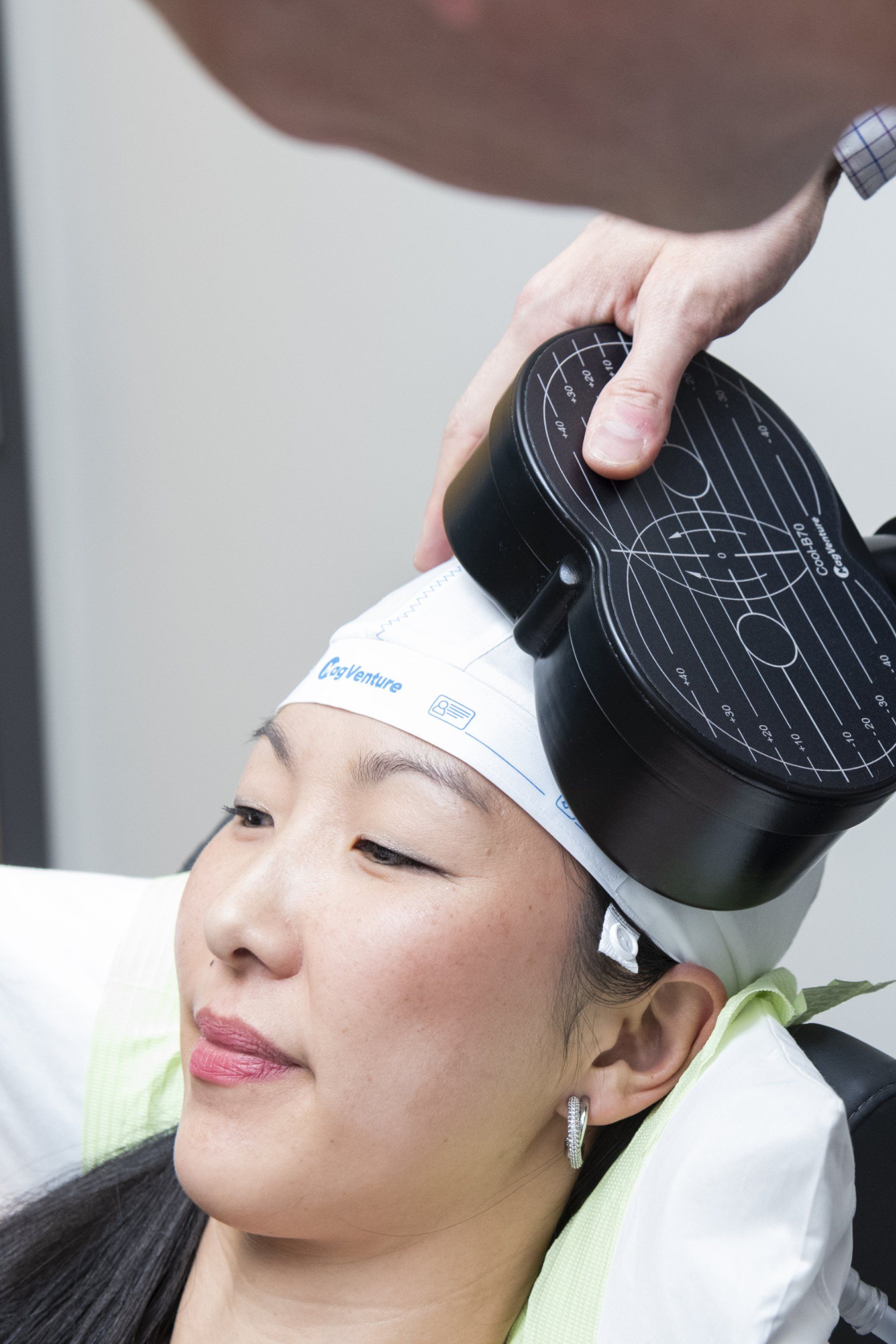
Slide title
Write your caption hereButton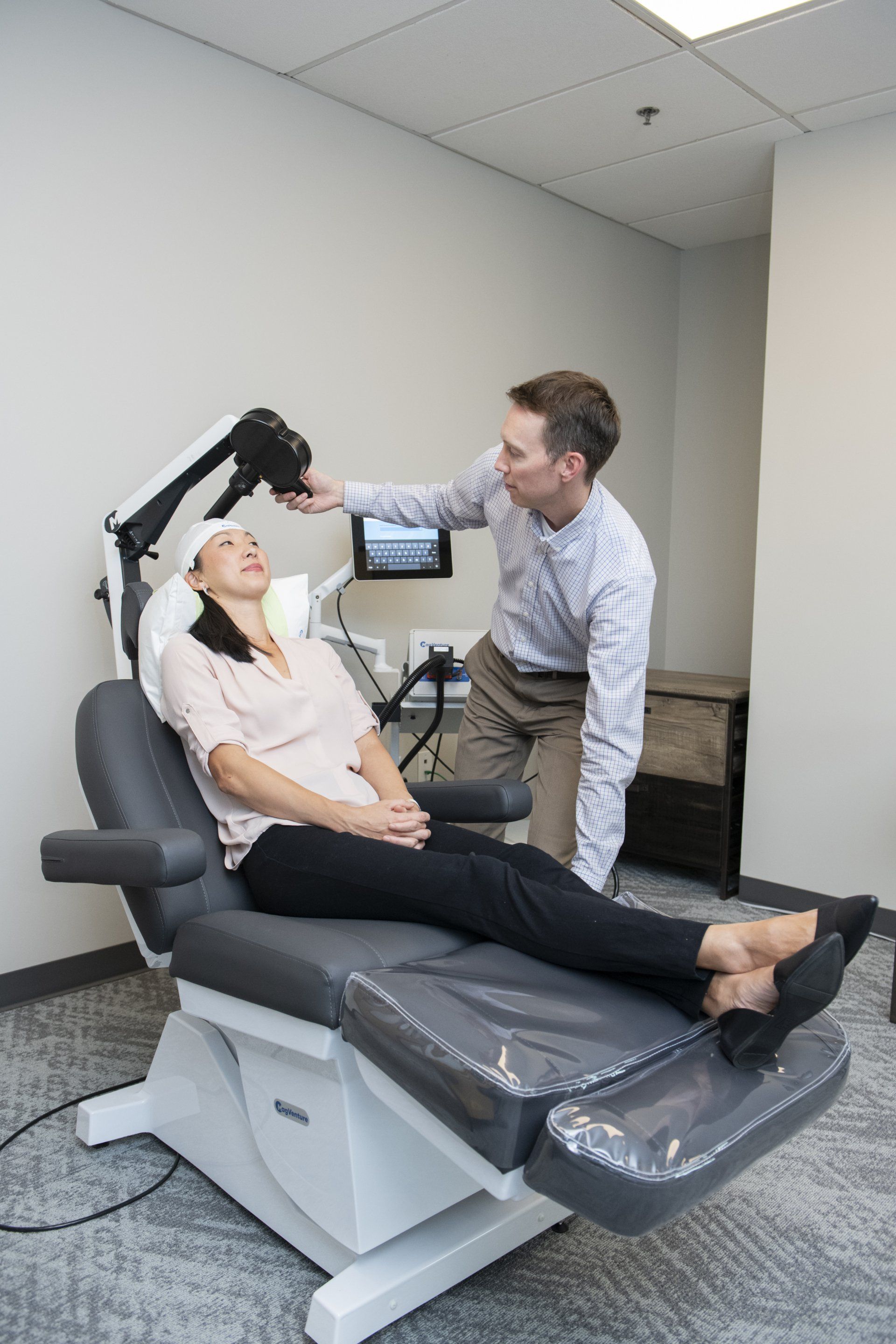
Slide title
Write your caption hereButton
What Makes Us Different
Free TMS Therapy Guides, Quizzes & Phone Consultations

Patient Testimonials
Previous Patients Putting Your Mind At Rest

Amazing staff. They do a great job of explaining everything so definitely call if you’re still thinking about it. I had depression that kept me in bed for days. Since the middle of treatment I actually want to do things, and then I’m actually doing them. Completely recommend!
Communication throughout the process was absolutely excellent!! “Bedside manner” from all 3 was excellent. Office was excellent. Just cannot think of anything to critique about process from beginning to end, including pricing! Many thanks!!
the tms journey
A Step By Step Process

Book your free telephone consultation with Dr. Clinch and use this time to ask any questions or voice any concerns about TMS. If there are no contraindications to treatment, you are a good candidate, and you wish to proceed with a full evaluation, we will schedule a full intake. You will be sent an invite to our confidential patient portal and forms for review and completion that expedite care.
Shortly after this, you will be seen in person for the full TMS evaluation. This will provide adequate information for us to then submit prior authorization for TMS coverage to your insurer. If seeking care off-label through self-pay, prior authorization is not needed. We then schedule your first and all subsequent treatment sessions. We obtain prior authorization and inform you of all costs prior to starting care.
Come in for your first treatment which starts with a 'mapping' to establish your unique treatment intensity and location. Following this and at all subsequent sessions, you will recline in a motorized chair, similar to a dental visit. You can then relax, listen to music, watch TV, read or chat during the treatment. At the end of your sessions, you can drive and return to your day as normal.
Samuel B. Clinch, M.D
Medical Director
Our shared inspiration is to alleviate mental illness and improve the mental wellbeing of the patients we treat. We respect all backgrounds and cultures and want to hear our patient’s stories to best guide care. During treatment, we reinforce positive wellness practices, help maximize lifestyle modifications, and integrate rTMS therapy into a patient’s overall mental and physical health treatment.
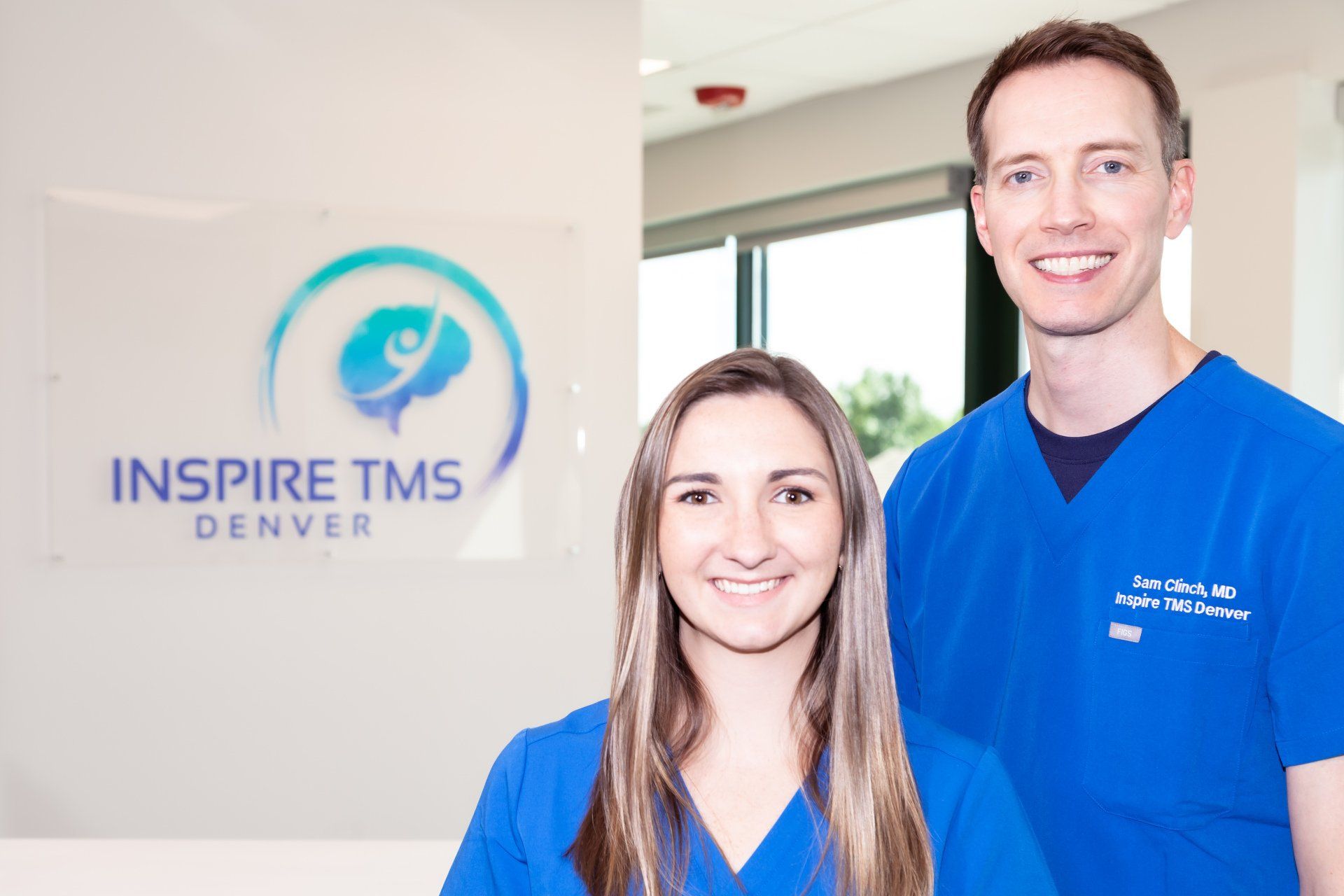

Free Consultation
Call 720-446-8675 now, or complete the form below to request a call back.
Contact Us
We will get back to you as soon as possible.
Please try again later.
Contact Us
LOCATION
340 East 1st Avenue, Suite 333
Broomfield, CO 80020
What Happens After I Send My Message?
A member of our team will confirm your free consultation appointment within one business day.
Discover if TMS is right for you and answer all your queries about treatment, eligibility and costs.
Take the First Step Towards Your Mental Well-being Today
Transcranial Magnetic Stimulation (TMS) and Electroconvulsive Therapy (ECT) are highly effective in the treatment of Major Depression, both having been approved by the FDA for treating Treatment Resistant Major Depression.
Pitting TMS against ECT is a bit like trying to compare apples to oranges, as there are many similarities along with key differences. TMS works on some of the same principles as ECT, using electrical currents to stimulate the brain and alter brain functioning. Read more: TMS Myths vs Facts →
Potted History of Electroconvulsive Therapy
We know that the brain functions by making billions of tiny electrical connections, so it stands to reason that an external electrical impulse could introduce changes within the brain. One might theorize that ECT hence began as an experiment assessing the effects of electrical activity on brain tissue. As is common with many scientific discoveries, however, Electroconvulsive Therapy really came about more by observation before any measured, deductive method.
Discovery:
Using electric shocks to induce seizure for medical benefit was first theorized in 1938 by an Italian Neurologist, Ugo Cerletti, after witnessing pigs being ‘shocked’ prior to slaughter. The shock appeared to calm and almost anesthetize the animals prior to being butchered. This lulling effect led Cerletti to theorize and experiment with electric shocks to trigger the same ‘healing’ convulsions in patients. Similar to medications that were just then being used to induce seizure, ECT showed promise as a means to 'reset' the brain and resolve fixed depressed mood.
The methods for ECT were of course rudimentary compared to the more advanced and controlled settings used today. As a result of this history and sensationalism by the media over the years, ECT is often viewed as a barbaric and unsafe treatment. ECT treatment of today, however, has come a long way and is much safer and better tolerated than in the past.
Key ECT Facts:
There is a postictal (post-seizure) state following treatment that involves general lethargy and trouble concentrating. Sometimes these symptoms persist for a time after treatment and memory loss can occur surrounding treatments. Some individuals may even experience long-term memory problems, but this is unclear.
Potted History of TMS
As noted, TMS works on the same principle of using electrical currents to stimulate the brain, but along more targeted and previously identified dysfunctional neural pathways.
Discovery:
The premise for TMS really dates back to the 1830s, when an English scientist, Michael Faraday, discovered the process of electromagnetic induction. It wasn’t until the mid 1980s, however, that this mechanism was theorized as a tool for evaluating and treating Psychiatric and Neurologic conditions. This work was done by Anthony Barker and his colleagues at a University in the UK. They were able to develop a delivery system - a handheld magnetic coil connected to a capacitor - for delivering stimulation to brain tissue. Originally, it was used for research and monitoring brain activity, but the therapeutic benefits quickly became apparent and TMS Therapy was born. Studies have flourished since and new indications are being developed beyond the great success seen with TMS in the treatment of Major Depression.
Like ECT, TMS harnesses electrical current, but it does so in a much more targeted fashion and transmits stimulation safely across the scalp and skull. A pulsating magnetic field induces electrical firing of neurons and synapses approximately only two to three centimeters into the brain. In ECT by contrast, the procedure causes diffuse firing to much deeper tissues at a much larger intensity. This leads to uninhibited electrical firing and a seizure.
ECT Process
ECT is only administered in a hospital by a Psychiatrist and Anesthesiologist supported by nurses and other staff. Patients must be medically cleared prior to pursuing ECT. The patient is fully sedated and treated within full surgical operation protocols. Additional medication is used to relax muscles and limit muscle pain following the procedure. A strong, but brief, electrical current is administered through electrical conducting material applied on the scalp inducing a seizure for 30-60 seconds. Without ongoing electrical stimulation, a seizure is typically self-limiting and the brain will return to baseline activity without additional intervention.
A monitored recovery period is essential due to use of anesthesia and the postictal state. And patients need someone to support and drive them back home following the procedure. On average, ECT requires two to three sessions per week to start, with an initial goal of approximately 12 sessions to gauge response. Maintenance sessions are frequently needed at regular intervals following, but if a patient achieves remission, a taper-off of treatment is attempted.
Side Effects
Any surgical procedure requiring anesthesia carries risk, as does inducing seizures. ECT is also known for causing memory loss. Treatment can also be associated with nausea, headache, and fatigue, and sometimes jaw or other muscle pain.
ECT- FDA Approved Treatment
TMS Process
Compared to the hospital setting required for ECT, TMS treatment typically takes place in an outpatient clinic. TMS does not require use of general anesthesia or any medications. Patients remain awake and alert prior to, during, and after treatments. Patients can drive themselves to and from their sessions without needing any support or someone to drive them home.
Read more: What to expect during your TMS treatment visits →
TMS treatment is overseen by a Psychiatrist. The initial “mapping” procedure determines the right stimulation intensity and sets the parameters for treatment and is performed by a Psychiatrist. Follow-up treatments are typically performed by a certified TMS technician with oversight from the
Psychiatrist.
A fluctuating electrical current is introduced to a coil of wires which in turn generates a pulsating magnetic field. This field is then directed onto areas of the brain responsible for depression and/or
anxiety by placing the coil adjacent to these areas on the scalp. Repeated stimulation occurs, with short intervals between stimulation and each treatment typically lasts three to 18.5 minutes. These two timeframes are the current FDA-approved protocols for Treatment Resistant Major Depression. These stimulations cause excitation of neurons in the tissue two to three centimeters tangential to the center of the coil. This results in connected neurons communicating with one another and, over time, correction of faulty pathways driving depression. The full mechanism of action remains a mystery, but the most common proposed pathway for treatment of depression and associated symptoms is through synaptic plasticity. This term describes how the brain can reorganize and actually grow new neural pathways via synapses - the structures that communicate between neurons. TMS can cause this phenomena and repair damaged networks that cause mental health symptoms.
In a course of TMS, patients come in five days per week for repeat treatments. On average, patients receive a total of 30 weekday sessions for six weeks with a taper of an additional six sessions over another three weeks. Some patients require maintenance TMS sessions in time similar to ECT.
Read more: TMS therapy pros & cons →
Side Effects
The most common side effects with TMS can include mild scalp discomfort and headache. A simple over-the-counter analgesic can help if needed and side effects usually diminish after a few sessions. The target stimulation intensity is often reduced at the beginning of a treatment course and then gradually increased to allow for adjustment to the procedure. Rarely, 1 in 30,000 treatments or less, a seizure may occur. This is on par or less likely than risk for seizure with antidepressant use. In light of this, seizure disorder is a contraindication for treatment. Metal in the brain, near the coil, or any magnetically influenced devices in the body also are contraindications for TMS treatment.
TMS-FDA Approved Treatment
OCD - Obsessive Compulsive Disorder - only with Brainsway and Magventure devices - Learn more about
TMS for OCD.
TMS Off-label Use
Anxiety - Learn more about
TMS for Anxiety.
Post Traumatic Stress Disorder-PTSD - Learn more about
TMS for PTSD.
Bipolar Disorder - Learn more about
TMS for Bipolar Depression.
Postpartum Depression - Learn more about
TMS for Postpartum depression
TMS has been used to treat many other mental and neurological disorders. The full potential of TMS has not yet been fully realized and many studies continue to research TMS and its impact on a diverse number of brain health issues.
| Transcranial Magnetic Stimulation | Electroconvulsive Therapy |
|---|---|
| Magnetic pulse | Electrical Current |
| Treatment Resistant Major Depression, OCD, Smoking | Severe or Treatment Resistant Major Depression, Bipolar, Schizophrenia, Catatonia, NMS |
| Outpatient Clinic | Inpatient Hospital |
| N/A | Full Anesthesia Surgery conditions Clinical recovery period |
| Side effects: Mild temporary scalp discomfort or headache; Rare risk of seizure | Side effects: Headache, Memory Loss, Risks of anesthesia and seizure |
Inspire TMS Denver always reviews treatment options for patients - including ECT if indicated. We want to ensure you are able to make the most informed decision prior to treatment with TMS. Questions about TMS vs ECT or other information on this page? Please contact us here to see about a free phone consultation.


Slide title
Write your caption hereButton
Slide title
Write your caption hereButton
Slide title
Write your caption hereButton
What Makes Us Different

Patient Testimonials
Previous Patients Putting Your Mind At Rest
I cannot say enough good things about Inspire TMS with the treatment, Dr. Clinch, and his staff. The treatment was very effective, helping me climb out of years of depression. Dr. Clinch is extremely knowledgeable, answered all my questions, and was very supportive, as was his staff.
Amazing staff. They do a great job of explaining everything so definitely call if you’re still thinking about it. I had depression that kept me in bed for days. Since the middle of treatment I actually want to do things, and then I’m actually doing them. Completely recommend!
Communication throughout the process was absolutely excellent!! “Bedside manner” from all 3 was excellent. Office was excellent. Just cannot think of anything to critique about process from beginning to end, including pricing! Many thanks!!
For more visit our Google reviews →
the tms journey
A Step By Step Process
Book your free telephone consultation with Dr. Clinch and use this time to ask any questions or voice any concerns about TMS. If there are no contraindications to treatment, you are a good candidate, and you wish to proceed with a full evaluation, we will schedule a full intake. You will be sent an invite to our confidential patient portal and forms for review and completion that expedite care.
Shortly after this, you will be seen in person for the full TMS evaluation. This will provide adequate information for us to then submit prior authorization for TMS coverage to your insurer. If seeking care off-label through self-pay, prior authorization is not needed. We then schedule your first and all subsequent treatment sessions. We obtain prior authorization and inform you of all costs prior to starting care.
Come in for your first treatment which starts with a 'mapping' to establish your unique treatment intensity and location. Following this and at all subsequent sessions, you will recline in a motorized chair, similar to a dental visit. You can then relax, listen to music, watch TV, read or chat during the treatment. At the end of your sessions, you can drive and return to your day as normal.
Our shared inspiration is to alleviate mental illness and improve the mental wellbeing of the patients we treat. We respect all backgrounds and cultures and want to hear our patient’s stories to best guide care. During treatment, we reinforce positive wellness practices, help maximize lifestyle modifications, and integrate rTMS therapy into a patient’s overall mental and physical health treatment.
Samuel B. Clinch, M.D
Medical Director
Free Consultation
Call 720-446-8675 now, or complete the form below to request a call back.
Contact Us
We will get back to you as soon as possible.
Please try again later.
Contact Us
LOCATION
340 East 1st Avenue, Suite 333
Broomfield, CO 80020
What Happens After I Send My Message?
A member of our team will confirm your free consultation appointment within one business day.
Discover if TMS is right for you and answer all your queries about treatment, eligibility and costs.
Take the First Step Towards Your Mental Well-being Today
Transcranial Magnetic Stimulation (TMS) and Electroconvulsive Therapy (ECT) are highly effective in the treatment of Major Depression, both having been approved by the FDA for treating Treatment Resistant Major Depression.
Pitting TMS against ECT is a bit like trying to compare apples to oranges, as there are many similarities along with key differences. TMS works on some of the same principles as ECT, using electrical currents to stimulate the brain and alter brain functioning. Read more: TMS Myths vs Facts →
Potted History of Electroconvulsive Therapy
We know that the brain functions by making billions of tiny electrical connections, so it stands to reason that an external electrical impulse could introduce changes within the brain. One might theorize that ECT hence began as an experiment assessing the effects of electrical activity on brain tissue. As is common with many scientific discoveries, however, Electroconvulsive Therapy really came about more by observation before any measured, deductive method.
Discovery:
Using electric shocks to induce seizure for medical benefit was first theorized in 1938 by an Italian Neurologist, Ugo Cerletti, after witnessing pigs being ‘shocked’ prior to slaughter. The shock appeared to calm and almost anesthetize the animals prior to being butchered. This lulling effect led Cerletti to theorize and experiment with electric shocks to trigger the same ‘healing’ convulsions in patients. Similar to medications that were just then being used to induce seizure, ECT showed promise as a means to 'reset' the brain and resolve fixed depressed mood.
The methods for ECT were of course rudimentary compared to the more advanced and controlled settings used today. As a result of this history and sensationalism by the media over the years, ECT is often viewed as a barbaric and unsafe treatment. ECT treatment of today, however, has come a long way and is much safer and better tolerated than in the past.
Key ECT Facts:
There is a postictal (post-seizure) state following treatment that involves general lethargy and trouble concentrating. Sometimes these symptoms persist for a time after treatment and memory loss can occur surrounding treatments. Some individuals may even experience long-term memory problems, but this is unclear.
Potted History of TMS
As noted, TMS works on the same principle of using electrical currents to stimulate the brain, but along more targeted and previously identified dysfunctional neural pathways.
Discovery:
The premise for TMS really dates back to the 1830s, when an English scientist, Michael Faraday, discovered the process of electromagnetic induction. It wasn’t until the mid 1980s, however, that this mechanism was theorized as a tool for evaluating and treating Psychiatric and Neurologic conditions. This work was done by Anthony Barker and his colleagues at a University in the UK. They were able to develop a delivery system - a handheld magnetic coil connected to a capacitor - for delivering stimulation to brain tissue. Originally, it was used for research and monitoring brain activity, but the therapeutic benefits quickly became apparent and TMS Therapy was born. Studies have flourished since and new indications are being developed beyond the great success seen with TMS in the treatment of Major Depression.
Like ECT, TMS harnesses electrical current, but it does so in a much more targeted fashion and transmits stimulation safely across the scalp and skull. A pulsating magnetic field induces electrical firing of neurons and synapses approximately only two to three centimeters into the brain. In ECT by contrast, the procedure causes diffuse firing to much deeper tissues at a much larger intensity. This leads to uninhibited electrical firing and a seizure.
ECT Process
ECT is only administered in a hospital by a Psychiatrist and Anesthesiologist supported by nurses and other staff. Patients must be medically cleared prior to pursuing ECT. The patient is fully sedated and treated within full surgical operation protocols. Additional medication is used to relax muscles and limit muscle pain following the procedure. A strong, but brief, electrical current is administered through electrical conducting material applied on the scalp inducing a seizure for 30-60 seconds. Without ongoing electrical stimulation, a seizure is typically self-limiting and the brain will return to baseline activity without additional intervention.
A monitored recovery period is essential due to use of anesthesia and the postictal state. And patients need someone to support and drive them back home following the procedure. On average, ECT requires two to three sessions per week to start, with an initial goal of approximately 12 sessions to gauge response. Maintenance sessions are frequently needed at regular intervals following, but if a patient achieves remission, a taper-off of treatment is attempted.
Side Effects
Any surgical procedure requiring anesthesia carries risk, as does inducing seizures. ECT is also known for causing memory loss. Treatment can also be associated with nausea, headache, and fatigue, and sometimes jaw or other muscle pain.
ECT- FDA Approved Treatment
TMS Process
Compared to the hospital setting required for ECT, TMS treatment typically takes place in an outpatient clinic. TMS does not require use of general anesthesia or any medications. Patients remain awake and alert prior to, during, and after treatments. Patients can drive themselves to and from their sessions without needing any support or someone to drive them home.
Read more: What to expect during your TMS treatment visits →
TMS treatment is overseen by a Psychiatrist. The initial “mapping” procedure determines the right stimulation intensity and sets the parameters for treatment and is performed by a Psychiatrist. Follow-up treatments are typically performed by a certified TMS technician with oversight from the
Psychiatrist.
A fluctuating electrical current is introduced to a coil of wires which in turn generates a pulsating magnetic field. This field is then directed onto areas of the brain responsible for depression and/or
anxiety by placing the coil adjacent to these areas on the scalp. Repeated stimulation occurs, with short intervals between stimulation and each treatment typically lasts three to 18.5 minutes. These two timeframes are the current FDA-approved protocols for Treatment Resistant Major Depression. These stimulations cause excitation of neurons in the tissue two to three centimeters tangential to the center of the coil. This results in connected neurons communicating with one another and, over time, correction of faulty pathways driving depression. The full mechanism of action remains a mystery, but the most common proposed pathway for treatment of depression and associated symptoms is through synaptic plasticity. This term describes how the brain can reorganize and actually grow new neural pathways via synapses - the structures that communicate between neurons. TMS can cause this phenomena and repair damaged networks that cause mental health symptoms.
In a course of TMS, patients come in five days per week for repeat treatments. On average, patients receive a total of 30 weekday sessions for six weeks with a taper of an additional six sessions over another three weeks. Some patients require maintenance TMS sessions in time similar to ECT.
Read more: TMS therapy pros & cons →
Side Effects
The most common side effects with TMS can include mild scalp discomfort and headache. A simple over-the-counter analgesic can help if needed and side effects usually diminish after a few sessions. The target stimulation intensity is often reduced at the beginning of a treatment course and then gradually increased to allow for adjustment to the procedure. Rarely, 1 in 30,000 treatments or less, a seizure may occur. This is on par or less likely than risk for seizure with antidepressant use. In light of this, seizure disorder is a contraindication for treatment. Metal in the brain, near the coil, or any magnetically influenced devices in the body also are contraindications for TMS treatment.
TMS-FDA Approved Treatment
OCD - Obsessive Compulsive Disorder - only with Brainsway and Magventure devices - Learn more about
TMS for OCD.
TMS Off-label Use
Anxiety - Learn more about
TMS for Anxiety.
Post Traumatic Stress Disorder-PTSD - Learn more about
TMS for PTSD.
Bipolar Disorder - Learn more about
TMS for Bipolar Depression.
Postpartum Depression - Learn more about
TMS for Postpartum depression
TMS has been used to treat many other mental and neurological disorders. The full potential of TMS has not yet been fully realized and many studies continue to research TMS and its impact on a diverse number of brain health issues.
| Transcranial Magnetic Stimulation | Electroconvulsive Therapy |
|---|---|
| Magnetic pulse | Electrical Current |
| Treatment Resistant Major Depression, OCD, Smoking | Severe or Treatment Resistant Major Depression, Bipolar, Schizophrenia, Catatonia, NMS |
| Outpatient Clinic | Inpatient Hospital |
| N/A | Full Anesthesia Surgery conditions Clinical recovery period |
| Side effects: Mild temporary scalp discomfort or headache; Rare risk of seizure | Side effects: Headache, Memory Loss, Risks of anesthesia and seizure |
Inspire TMS Denver always reviews treatment options for patients - including ECT if indicated. We want to ensure you are able to make the most informed decision prior to treatment with TMS. Questions about TMS vs ECT or other information on this page? Please contact us here to see about a free phone consultation.
In This Guide
Featured Reviews
-

“We have been working together for a few years now. He is always sensitive to my current condition and always trying to get me the most effective solutions with the least amount of side affects.”
- Andre D.
MashIt 
"I feel like he cares about what's going on with me. Took time to listen and helped with my concerns about a medication that I've been on that seems to be causing more weight gain and trouble with weight loss."
FabuFit
“Dr. Clinch is very professional, kind and courteous. I never feel rushed with any of my appointments with him. Dr. Clinch listened to my concerns and gave great feedback. The phone appointment was very convenient!”
YesSuits
Too good to be true? Compare the many ups and the few downs of TMS.
58% of patients experienced significant improvement.
Patients have to try multiple medications due to lack of response or side effects.
Free Consultation
What Happens After I Send My Message?
- A member of our team will confirm your free consultation appointment within one business day.
- Discover if TMS is right for you and answer all your queries about treatment, eligibility and costs.
Contact Us
We will get back to you as soon as possible.
Please try again later.
Is TMS Right For You?
We believe rTMS is an underutilized treatment approach. It is safe, non invasive, free of systemic side effects and well tolerated. Discover if TMS is right for you by taking the quiz or booking a consultation.


Slide title
Write your caption hereButton
Slide title
Write your caption hereButton
Slide title
Write your caption hereButton
What Makes Us Different

Patient Testimonials
Previous Patients Putting Your Mind At Rest
I cannot say enough good things about Inspire TMS with the treatment, Dr. Clinch, and his staff. The treatment was very effective, helping me climb out of years of depression. Dr. Clinch is extremely knowledgeable, answered all my questions, and was very supportive, as was his staff.
Amazing staff. They do a great job of explaining everything so definitely call if you’re still thinking about it. I had depression that kept me in bed for days. Since the middle of treatment I actually want to do things, and then I’m actually doing them. Completely recommend!
Communication throughout the process was absolutely excellent!! “Bedside manner” from all 3 was excellent. Office was excellent. Just cannot think of anything to critique about process from beginning to end, including pricing! Many thanks!!
For more visit our Google reviews →
the tms journey
A Step By Step Process
Book your free telephone consultation with Dr. Clinch and use this time to ask any questions or voice any concerns about TMS. If there are no contraindications to treatment, you are a good candidate, and you wish to proceed with a full evaluation, we will schedule a full intake. You will be sent an invite to our confidential patient portal and forms for review and completion that expedite care.
Shortly after this, you will be seen in person for the full TMS evaluation. This will provide adequate information for us to then submit prior authorization for TMS coverage to your insurer. If seeking care off-label through self-pay, prior authorization is not needed. We then schedule your first and all subsequent treatment sessions. We obtain prior authorization and inform you of all costs prior to starting care.
Come in for your first treatment which starts with a 'mapping' to establish your unique treatment intensity and location. Following this and at all subsequent sessions, you will recline in a motorized chair, similar to a dental visit. You can then relax, listen to music, watch TV, read or chat during the treatment. At the end of your sessions, you can drive and return to your day as normal.
Our shared inspiration is to alleviate mental illness and improve the mental wellbeing of the patients we treat. We respect all backgrounds and cultures and want to hear our patient’s stories to best guide care. During treatment, we reinforce positive wellness practices, help maximize lifestyle modifications, and integrate rTMS therapy into a patient’s overall mental and physical health treatment.
Samuel B. Clinch, M.D
Medical Director
Free Consultation
Call 720-446-8675 now, or complete the form below to request a call back.
Contact Us
We will get back to you as soon as possible.
Please try again later.
Contact Us
MAIN OFFICE
720-446-8675
LOCATION
340 East 1st Avenue, Suite 333
Broomfield, CO 80020
What Happens After I Send My Message?
A member of our team will confirm your free consultation appointment within one business day.
Discover if TMS is right for you and answer all your queries about treatment, eligibility and costs.
Take the First Step Towards Your Mental Wellbeing Today

